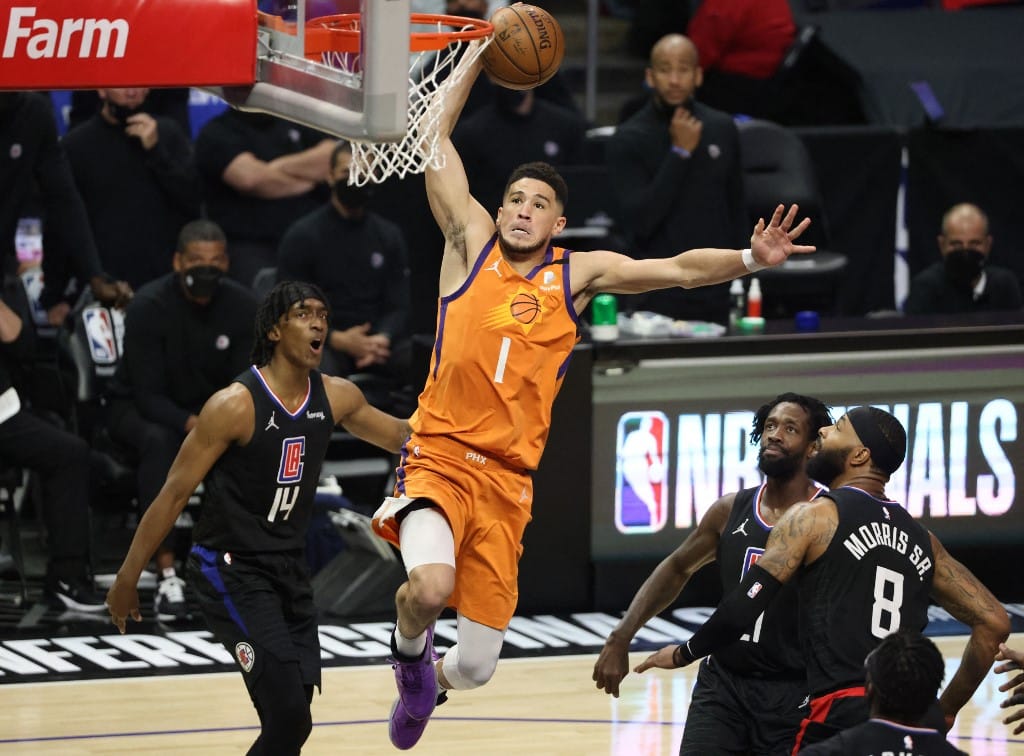Interested in betting on the NBA? Here is a breakdown of what you should know in order to get started.
Types of Bets
Spread
Let’s say that, for example, the Hawks are favored by 3.5 points to beat the Hornets.
If the favored team covers the spread, then that team — in this case the Hawks — will win by more than 3.5 points. If the underdog Hornets cover the spread, then they will either win the game straight-up or stay within 3.5 points.
You will see another number next to the spread. This indicates the amount of “juice” that you will lay. Let’s say that the Hawks are listed at -3.5 (-110). This means that you will risk 1.1 dollars in order to win one dollar or 110 dollars to win 100 dollars.
The amount that you risk or win changes. But the ratio of amount risked to amount won will remain determined by that number (in this case -110 NBA odds).
Moneyline
You don’t have to bet the spread. You can play the moneyline instead. This type of bet means that you are betting on a team to win.
Because it is easier for the underdog to cover than to win straight-up and because the moneyline for the underdog generates a nicer payout, I recommend betting accordingly: invest .75 of your unit on the spread and .25 on the moneyline.
With this kind of division of your unit, you would still profit if the Hornets only cover and do not win straight-up. Because their odds to win were so nice, you would still receive a rewarding payout for their victory.
For my Best Bets, I do not like investing too heavily in the moneyline for the favorite because it involves a greater financial risk.
If I want to play the Hawk moneyline at -160, meaning I have to risk 160 just to win 100, then I must surely be very confident that Atlanta will win, confident enough that they will win by at least four points and so cover the spread.
Total
Oddsmakers set a total for a given game and you can bet on the game to go over or under that posted total. If the over/under for the Hawks/Hornets game is 220 and you bet the “over,” then you will win your bet if the combined score of both teams in the game exceeds 221.
If the combined score is 220, then you will “push,” meaning that you neither win nor lose. If the combined score is less than 219, then you will lose.
Similarly, you can bet on team totals. You can bet that a team will go over or under the posted team total.
Parlays
In order to maximize your profit, you can parlay individual wagers. In a parlay, every individual wager must hit in order for you to win the bet. Because this type of bet is harder to hit, the payout will be more attractive.
Futures
You can also invest in futures. You can bet on who the MVP will be, for example, or who the NBA champion will be.
As for any kind of bet, you will want to shop around Top Sportsbooks in order to get the best number and so give yourself a higher margin for error.
Manage Your Bankroll
Bankroll management is just as important as breaking down games to determine what your NBA Picks will be.
With bad bankroll management, your record could be 5-1, but you could be making less money than someone who is 6-4 and doesn’t risk more money on games than you.
I recommend flat betting, or placing the same-sized wager for every game.
Scheme
For your Best Bets, don’t be blindsided by things like player talent. Things often do not play out as they “should” according to how “good” different teams are.
A team may be dogged by the same amount of points against Team A and Team B but cover more often against Team A because it matches up better with that team.
I recommend watching as many games as you can and getting a feel for the strengths and weaknesses of each team in order to have a more reasoned basis for predicting how their games will play out.
Stay Logical
You will often see people point to trends in order to support their bet. But trends are meaningless if there isn’t a logical reason behind them.
For example, “Team A has failed to cover its last five games on a Tuesday” probably has to be dismissed as a coincidental trend because there is likely no reason why a team would perform better on Tuesdays.
Scheduling
Pay attention to scheduling. Back-to-backs, for example, are always interesting. Some coaches are great at adjusting and therefore thrive in the second leg.










